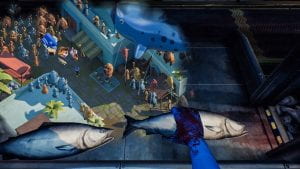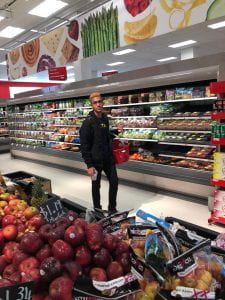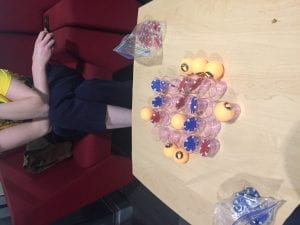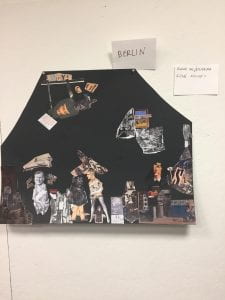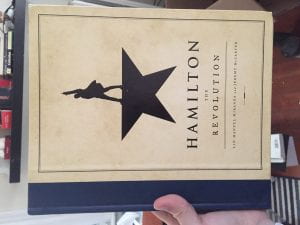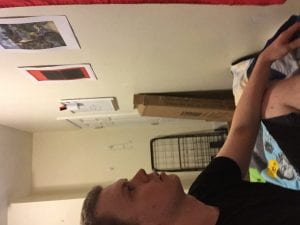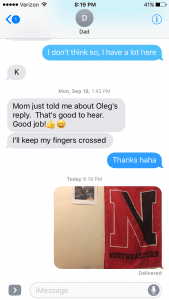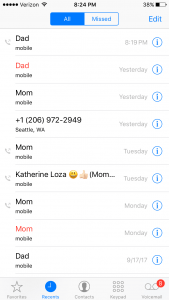The Game
The emotional experience the game and its mechanics are meant to convey is the feeling of being in a failing relationship, and knowing you’re in it, but trying to hide those feelings away and lie to yourself that the relationship is fine. The game is played by the player receiving a letter from their character’s long-distance partner each day. After reading the letter, the player “goes to work” by filling out sticky notes of emails, code snippets, and art assets. While doing this, however, the player must also handle their anxieties and mental state by also catching their anxieties in a digital game to hide them from their brain in an attempt to convince themselves that their relationship is in better shape than it is. As the days go on, the letters hint at more and more issues, and the anxieties begin to fall at faster and faster rates, distracting the player more and more. The goal is to complete as much work as possible each day in the given time limit, and to keep their confidence level above zero (this level goes down with missed anxieties). If a player’s confidence does hit zero, they must stop working for the day to deal with their emotions. Any missed work could result in a pay deduction by their boss. The game ends with the relationship ending, but as a result the player can focus solely on their work without the distraction of their anxieties, which represents the weight lifted from them by not having to deal with the pressure of an unhealthy relationship any longer.
The Inspiration
This game was heavily inspired by the games Every Day The Same Dream and the Cannery scene of What Remains of Edith Finch. In Every Day The Same Dream, the player-character goes through the “same” day of work in a cycle unless they perform specific actions that break that cycle, much like how in this game the player is doing the same menial tasks every day of work. In the cannery level of What Remains of Edith Finch, the player is shown through mechanics the feeling and experience of performing a menial physical task over and over again to the point where their mind can wander into much more detailed, complex tasks, just as how in this game the player is repeating the same basic actions for their work while the intensity of handling their anxieties ramps up as they go along. The game was also inspired by Yoko Ono’s Cut Piece, in the sense that the experience becomes more stressful and intense as it goes on longer and longer, and that the piece is a very personal interaction between the player and the artist. I played a role in the game as the player’s boss, and the game is pseudo-autobiographical, which opens the player up to experiences and feelings I’ve been familiar with before.
The Materials
Like many ready-mades and flux-kits, many of the elements of this game were pre-made objects that needed only slight interaction from the player. Letters that needed only to be read, sticky notes requiring only a signature or a drawing. The digital element was the only thing I had to create from scratch, but even then the main mechanic of catching falling objects is a simple thing many games include in some capacity. I wanted the pieces to feel genuine and purposeful. As can be seen in the pictures of the letters, as the days go on the letters become less and less heartfelt and the materials used to write them become cheaper and cheaper, representing the partner’s waning interest in the relationship.
The Results
The player’s experience was as close to the target as possible. The player said they had been in an experience similar to what the game was mirroring, and said the mechanics very accurately expressed the emotional feeling of being in a failing relationship and trying to cope with that fact.



Playing the game.

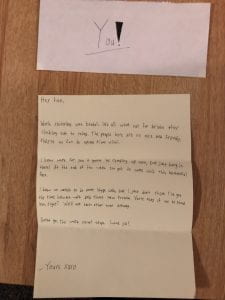

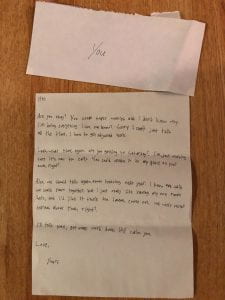
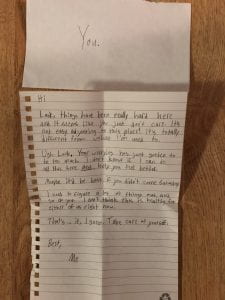
The letters.
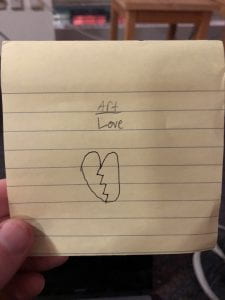
The final piece of “work.”

The digital component.

